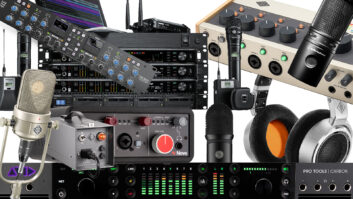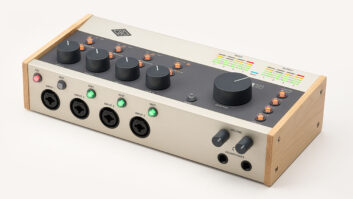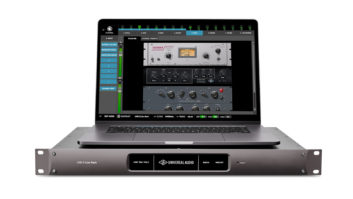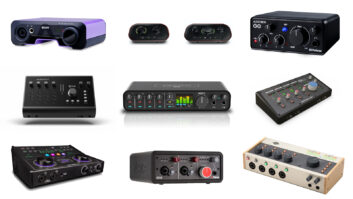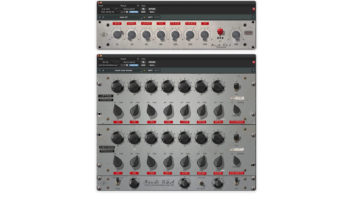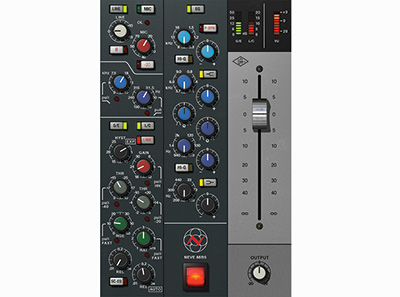
Universal Audio’s plug-in development team must be working overtime as it seems new plugs come out every few months. I recently got my hands on two of the latest releases and gave them a good going over in a range of applications. We have the new Softube plug-in for the UAD format but first up is the Neve 88RS Channel Strip Collection. The bundle includes the ground-up rewrite of the 88RS Channel Strip plus the original Neve 88RS channel strip plugin, which won the TEC Award in 2007.
Changing Channels
The collection includes the new 88RS channel strip and the original “Legacy” version. The new 88RS adds to the modeling of the Input transformers and output amplifier stage. The new 88RS rewrites the modeling of the input transformers and output amplifier stage while adding the preamp section. The new plug-in integrates with Apollo’s front panel and the Apollo mixer via UA’s Unison technology. For example, if you click the Phase Invert button on Apollo, the corresponding phase button on the 88RS reflects the change.
A “complete circuit” model does consume a considerably higher amount of DSP usage and this is why UA made each section switchable allowing you to reduce DSP drag.
In a real-life 96kHz mixing situation, I found that in using my UAD-2 Octo card with its eight DSP chips, I could use 12 channels of Neve 88RS plus 24 channels of 88RS Legacy, all with both compression and EQ engaged, and still have 25-percent of DSP remaining, the equivalent of an entire UAD-2 Duo card.
My biggest complaint about the original 88RS was the high band of the EQ could never give me the air I was trying to dial in when working at 44.1 or 48 kHz, as it did not up-sample to do its processing. At 96 kHz this issue was gone and the EQ sounds beautiful. The new 88RS internally up-samples, and as with all UAD plug-ins that up-sample, it runs internally at 4x the session’s sample rate; this allows the EQ section to react naturally without the limitations of the sample rate.
Let’s Hear It
The added transformer modeling and output amps are great additions, providing a slickness to the sound vs. the UAD Neve 1073, which sounds more raw and hairy. The new plug sounds like what I want music to sound like when I get to the mixing stage.
The magic of the new 88RS comes from the addition of the new input and output modeling. Simply turning up the inputs and bringing down the output fader introduces so many sonic flavors, compression from distortion, harmonic distortions and a curve to the overall tone. This alone was worth the price of admission. Add the ability to use it with the Apollo’s Unison technology and it’s a no-brainer for anyone who likes the sound of the Neve 88 Series.

Softube Marshall 1959 Plexi Amp Simulator
Softube borrowed a perfectly preserved 1967 Super Lead from Marshall’s museum and paired it with a Marshall 1960BHW 4×12 cabinet with well-broken-in Vintage 30s, and together with producer/engineer Tony Platt (AC/DC’s Highway to Hell and Back in Black) set out to capture the legend.
Amp It Up
The Marshall Plexi is not an amp that needs much introduction. It’s like a Shure SM57; if you’ve been around audio for longer than a month, you probably know about it. The key to the amp is lots of experimenting with the combination of inputs and volumes.
The amp is set up with Input 1 feeding Volume 1 for the bright channel. Input 2 feeds Volume 2, making the dark channel. One of the keys to dialing in the Plexi is to use a patch cable to jump the inputs. The top inputs for both inputs 1 and 2 are high gain, and the bottom ones are for low gain. With the plug-in you simply click on Input 1’s top to be “plugged” into that input. A second click on your input and a patch cable appears connecting the bottom Input 1 with Input 2 top. A third click of your input and the patch cable moves from Input 2’s top to Input 2’s bottom. This sort of combination works in every direction, which is important, as where your guitar plugs into initially and where the patch comes from and goes to all matter—all change the tone and reaction of the amp. The Softube Marshall plug-in captured all of these combinations extremely well.
In addition to a simple tone stack of bass, middle, treble and presence, jumping the inputs allows you to work the two volumes as a type of EQ, as well as blending their two gain flavors caused by the different input tones.
Clicking on the right side of the plug-in’s GUI opens the Channel Strip that controls how the amp’s speakers are captured. The Channel strip is a 3-channel mixer with master High/Low equalizer and main output volume control. There is also a selection switch that scrolls through the three preset microphone combinations.
The first is Dynamic, featuring a Shure SM57, a Sennheiser e 609 and an omni Neumann U87 capturing the room. The second is FET, using a Josephson E22, a Neumann U87 and a Coles 4038 for the room. Last is Valve—two Neumann U67s placed in a complementary setup and an AKG C12 for the room. Each mic has its own volume fader, pan and a solo button. You may also select to turn off the speaker completely to feed the amp’s output directly another speaker simulator of your choice. I realized that I have never played a perfect example of this amp. I have played through so many Plexis but all have been modified or repaired with different aftermarket parts or recapped. Here I could tell that the emulation was true to the amp’s heritage. The controls’ reactions and resulting sound perfectly reflect the characteristics of a Marshall. There are no extras, no digital FX, and no countless speaker and amp combinations; this is simply a Marshall Plexi in plug-in form.
Then, all the benefits of a plug-in are available. You can automate the controls, save and recall setups on the fly, even assign controls to an expression pedal, bringing the Plexi into the new world of music production and performance possibilities.
Tim Dolbear is a producer/engineer at Eclectica Studios in Austin, Texas.
Try This
While mixing, on any track, engage the -20 pad, switch the input over to Mic and dial up the input gain so the OVL light just starts to flash on only the loudest notes. Bring the channel’s fader down so the output is equal to the level when the plug-in is bypassed. Now toggle on and off the big red power button on the 88RS.
Product Summary
COMPANY: Universal Audio
PRODUCT: 88RS Collection
WEBSITE:www.uaudio.com
PRICE: $299; $149 for owners of Legacy Neve 88RS plug-in
PROS: Has “that” sound! Complete circuit modeling. Unison technology.
CONS: High DSP usage; new meter location takes getting used to.

